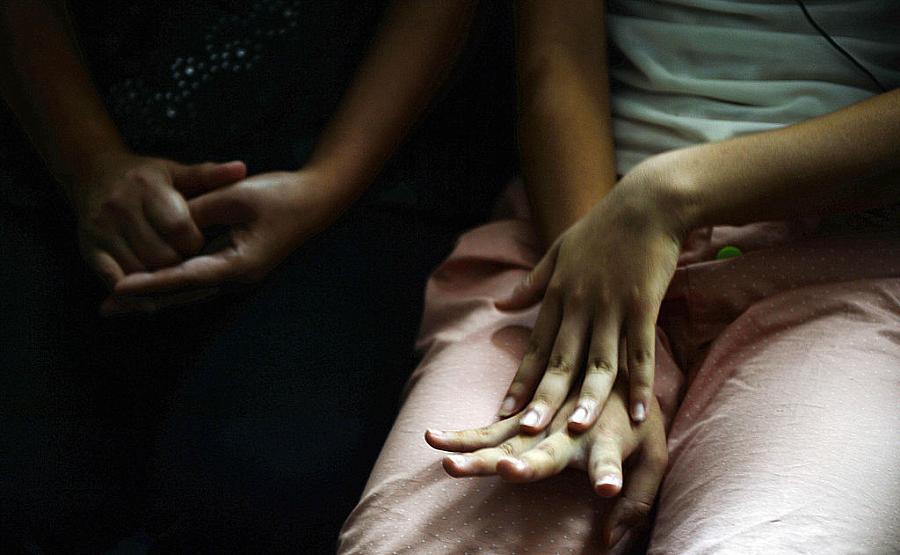Reporting on ‘hidden foster care system’ confronts difficult questions

Photo: Laurent Fievet/AFP via Getty Images
For five years, I’ve covered the child welfare system in Texas, where I live, as well as in other states and counties. These are hard stories to tell. The system is failing, and those who are impacted are some of the most vulnerable members of society: Children, disproportionately Black and Indigenous children, many of whom are born in poverty, whose families are struggling with systemic problems that manifest in deeply personal, and interpersonal, ways.
When I first heard a source tell me about a “hidden foster care” system, in which the makeup of thousands and thousands of families are changed as a result of a child protective services investigation — without a trace in the court system set up to handle these types of cases — I was pretty shocked. I’d been reporting on the ins and outs of the system and had not understood that the impact of that system was way beyond what the numbers were reporting.
This story was particularly challenging because many who work in the child welfare system and particularly those who seek to reform or even abolish it feel that these types of informal placements of children with their relatives are preferable to formally placing more children in a system that has been found repeatedly to be unfair, unjust and actively harmful to children and families. The legal system is often clearly tilted in favor of the state and against parents, who are mostly marginalized in a number of ways already.
But still, there are fundamental issues with due process. If the state can step in and move children without any legal check, and if parents are coerced to let the state take their children because they’re afraid of a worse outcome if they say no, then how far does that power extend? If the traditional child welfare system often gets it wrong when it comes to kids’ best interests, what’s happening in all these situations that are hidden from public view?
My major challenge was one of reporting: I wanted to find a parent who experienced the removal of their children in this way to speak to me about their experience. But because these cases often involve parents with substance use problems or who are incarcerated, it was difficult — particularly amid COVID-19, when so much in-person reporting was off-limits — to find parents whose experiences fit this exact set of circumstances. Because the fellowship deadline for the story was the end of the year, I wasn’t able to make it happen in time.
I still think there’s a story there. And I think some of the conversation the piece started online among respected child welfare professionals was a really good conversation to begin having out in the open. Is the goal to reduce the negative impact of the child welfare system, and does that mean a preference for informal situations, even if that means no support for the children or caregivers? What does the system owe these families? Is that support better suited to come from a different agency, one that isn’t tied to a punitive system that many parents fear and hold in contempt?
On Twitter, Kathryn Fort, the director of the Indian Law Clinic at Michigan State University, raised an objection to the story, saying the piece had “very little discussion of why we think getting the state MORE involved is beneficial,” and adding that “I don’t believe forcing formal CPS/state involvement is remotely the solution here.”
Kevin Campbell, whose Family Finding model helps connect children in the system to relatives who care about them, agreed. “How would it benefit them to be seen by CP and the Court?” he asked me on Twitter. “The language suggests these families are missing out on something positive.”
The majority of my work about this topic is focused on the ills of the traditional system, and so I think this is valid criticism. There is room here for different perspectives and likely another deep dive into the subject, one that would be much longer — and take much longer to report. But there are fundamental issues that need to be addressed. While it’s clear from the research that family members are the best options for children who can’t remain in their homes, it seems unethical to me that in a kinship caregiving population in which 40% live below the poverty line, the state is providing no monetary support or services to the family. In the traditional foster care system, foster parents get paid to care for children and have an array of services, from health insurance to mental health care, provided for these kids, who often really need the extra support and services.
Again on Twitter, Campbell said that in some places, monetary support for kinship caregivers is available outside of the child protection system. “Washington state placed economic support for kinship care with aging and adult services and financial assistance,” not as part of child protection, he said. “The two things should be separated, we don't need to grow the broken system larger or create a new private industry.”
The piece I wrote served as a springboard to address a complex and nuanced issue that has largely been outside of the media narrative around foster care. It’s a start of what I hope turns into more reporting and more perspectives about a practice — and a larger child protection system — that needs more public scrutiny in order to address the ways that our society is failing children and families who need our help.
**

